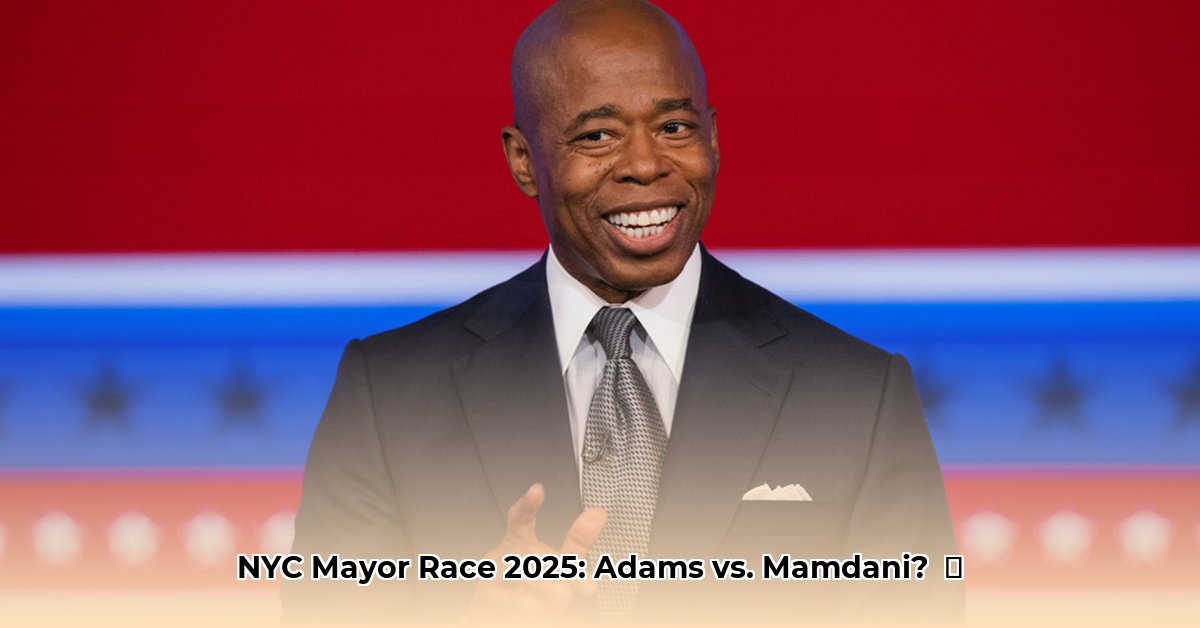
A City Divided: Two Visions for New York's Future
The 2025 New York City mayoral race is a high-stakes showdown between incumbent Eric Adams and challenger Zohran Mamdani, representing vastly different visions for the city's future. Their contrasting approaches to key issues like crime, affordability, and social justice will significantly shape New York's trajectory for years to come. This election isn't just about choosing a leader; it's about defining the city's identity and priorities. Will New Yorkers opt for continuity under Adams or embrace change with Mamdani?
Crime and Safety: A Tale of Two Approaches
Both Adams and Mamdani acknowledge a recent drop in violent crime, but their interpretations diverge sharply. Adams credits his administration's "tough-on-crime" strategy, emphasizing increased police presence and proactive measures. But is this a sustainable approach? Mamdani argues for a more holistic strategy, addressing underlying socio-economic issues. He suggests that focusing solely on policing ignores deeper societal problems contributing to crime rates. This fundamental difference in approach forms a core debate within the campaign. What's the long-term solution amidst differing crime statistics narratives?
The High Cost of Living: A Pressing Reality
New York City's high cost of living is a major campaign issue. Adams highlights job creation and economic growth initiatives, but Mamdani points to rising rents and the struggles of everyday New Yorkers. While Adams emphasizes economic stimulation, Mamdani prioritizes affordable housing initiatives and rent regulation. This contrast begs the question: how can economic growth be translated into tangible improvements for average New Yorkers battling the high cost of living? The answers will influence voters significantly.
Getting to Know the Candidates: Strengths and Weaknesses
Incumbent Eric Adams benefits from name recognition and the ability to highlight his administration's achievements, real or perceived. However, controversies and criticisms from his tenure could impact his appeal to some voters. This potential vulnerability presents an opportunity for Mamdani.
Mamdani, as a challenger, offers a fresh, progressive perspective, particularly on affordability and social justice. He has effectively tapped into voter frustration with the status quo, building significant momentum. However, unseating a well-funded incumbent is a monumental task. How will Mamdani’s relative lack of experience weigh against Adams’s record?
Who Will New Yorkers Choose? Understanding the Electorate
New York City's diverse population presents a complex electoral landscape. Both campaigns must tailor strategies to resonate with various communities and their unique concerns, showcasing adaptability to each demographic's needs and priorities. This diverse electorate ensures that no single approach will guarantee a victory. The upcoming election will serve as a reflection of the challenges faced by diverse communities within this unique environment. How will each candidate navigate these different priorities?
A Glimpse into the Future: Potential Outcomes
Predicting the election outcome is challenging. The effectiveness of each candidate's messaging, media coverage, and unforeseen events will all play significant roles. The election could hinge on voter turnout, the impact of endorsements, and the resonance of each candidate's vision with various demographic groups, particularly those from vulnerable communities. Will the voters' choices reflect a preference for stability or sweeping change?
Key Players and Their Strategies
| Stakeholder | Short-Term Goals | Long-Term Ambitions |
|---|---|---|
| Mayor Eric Adams | Highlight crime reduction; address criticisms transparently. | Continue infrastructure projects; implement comprehensive affordability plans. |
| Zohran Mamdani | Emphasise affordable housing and social justice; expose Adams's shortcomings. | Strengthen community ties; develop robust policy frameworks. |
| New York City Voters | Actively engage with candidate platforms prioritising core issues | Secure sustainable city policies benefiting all citizens and promoting equality. |
Navigating the Risks: Potential Challenges
| Risk Factor | Likelihood | Potential Impact | Mitigation Strategies |
|---|---|---|---|
| Low Voter Turnout | Moderate | Significant | Increased voter participation via targeted outreach and community engagement. |
| Negative Campaigning | High | Moderate to High | Maintain positive campaigning emphasizing shared goals; fact-checking of all claims. |
| Economic Downturn's Influence | Moderate | High | Emphasize economic resilience and sustainable economic policies. |
| Independent Candidates' Impact | Moderate | Moderate | Continuously monitor independent candidates and adjust strategies accordingly. |
| Ongoing Corruption Allegations | Moderate | High | Address concerns openly; cooperate with investigations. |
This election will be pivotal for New York City. The choice facing voters will determine the city's future direction and illustrate the importance of civic engagement. The outcome will ultimately reflect New Yorkers' priorities and their vision for the city's future.